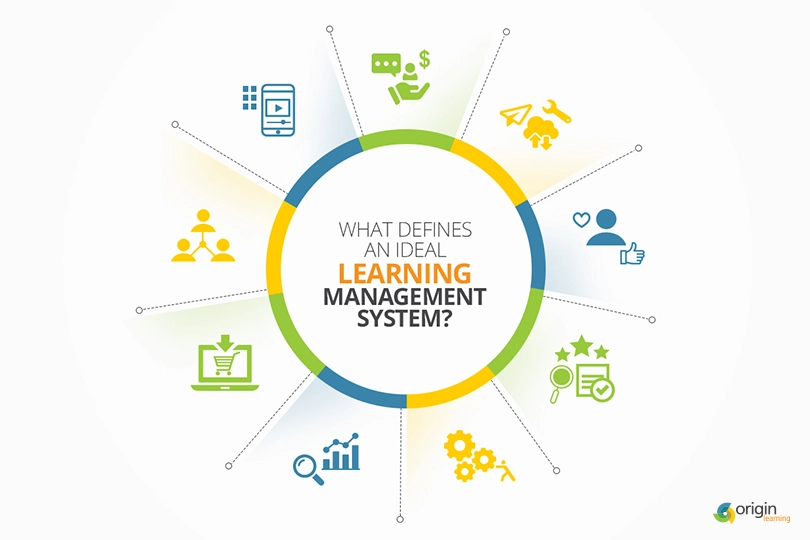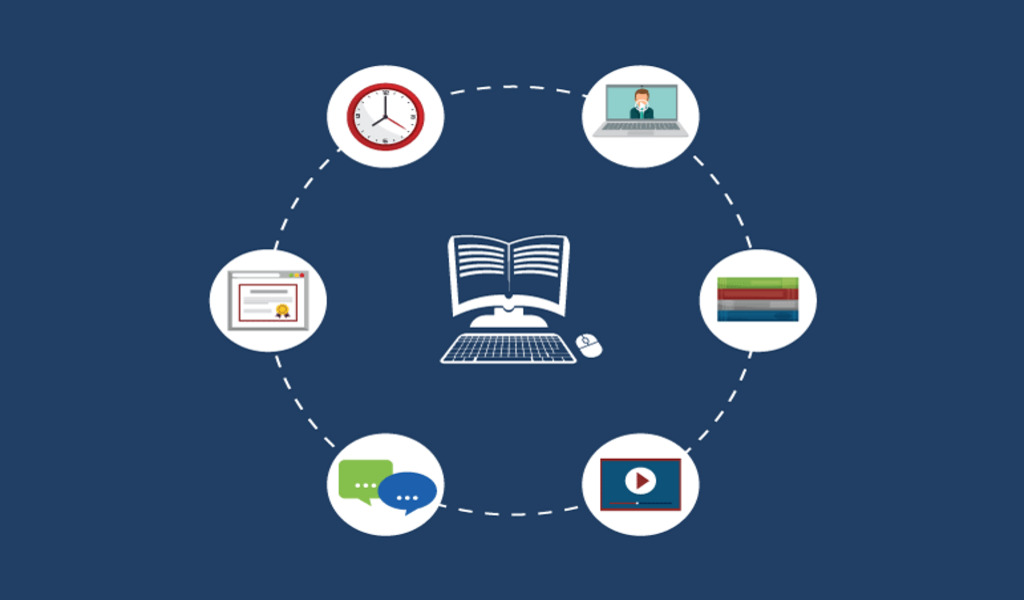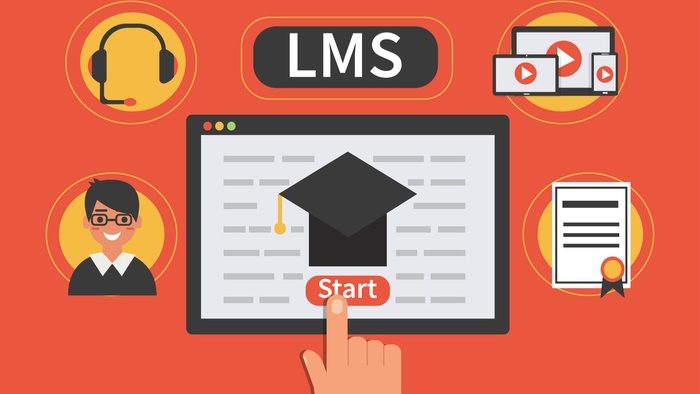Business
Learning Management Systems (LMS): Features, Benefits, And Choosing The Right One For Your Business

(CTN NEWS) – Learning Management Systems (LMS) is essential for modern businesses to manage employee training and development programs. They provide a centralized platform for creating, delivering, and tracking learning content, making it easier for organizations to train their workforce effectively.
This article will discuss the features, benefits, and how to choose the right LMS for your business.
What is a Learning Management System (LMS)?

A Learning Management System (LMS) software application helps organizations manage and deliver training and development programs.
It is a centralized platform that allows businesses to create, deliver, and track learning content, including courses, quizzes, and assessments.
LMSs enable businesses to manage employee training and development programs more efficiently and effectively.
Types of LMSs
There are three main types of LMSs:
- Cloud-based LMS – Also known as Software-as-a-Service (SaaS) LMS, these systems are hosted on the cloud and accessed through a web browser. They are easy to set up, manage, and maintain, and are popular with small to medium-sized businesses.
- Open-Source LMS – These LMSs are free and customizable, making them popular with businesses with a dedicated IT team. Open-source LMSs allow businesses to modify the code to suit their needs but require technical expertise to set up and maintain.
- Self-Hosted LMS – These LMSs are hosted on the organization’s servers, providing greater control over the system’s features and functionality. Self-hosted LMSs require significant IT resources to set up and maintain and are more popular with large businesses.
Features of an LMS

LMSs have various features that allow businesses to manage their training and development programs effectively. Here are some of the key features:
- Course Creation and Management – LMSs allow businesses to create and manage courses, including content, assessments, and quizzes.
- Content Delivery – LMSs deliver learning content in various formats, including video, audio, and text-based content.
- Tracking and Reporting – LMSs track and report on learner progress, providing businesses with valuable insights into the effectiveness of their training programs.
- Collaboration – Some LMSs include collaboration tools that allow learners to interact with each other and the instructor.
- Mobile Learning – LMSs enable learners to access training content on their mobile devices, providing greater flexibility and convenience.
Benefits of an LMS
Using an LMS offers several benefits to businesses, including:
- Cost-Effective – LMSs eliminate the need for physical training materials and venues, reducing training costs significantly.
- Flexibility – LMSs allow learners to access training content at any time, from any location, making it easier to fit learning into their schedules.
- Consistency – LMSs provide a consistent learning experience, ensuring all learners receive the same training content and assessments.
Choosing the Right LMS

Choosing the right LMS for your business can be daunting, but ensuring that your training and development programs are effective is crucial. Here are some factors to consider when choosing an LMS:
- Business Needs – Assess your organization’s training needs and identify the essential features for your business.
- User-Friendliness – Choose an LMS that is easy to use for both learners and administrators.
- Scalability – Consider the LMS’s ability to handle your business’s growing training needs.
- Support and Training – Look for an LMS provider offering comprehensive support and training to ensure you can maximize your investment.
- Budget – Choose an LMS that fits your budget without compromising essential features.
How to Implement an LMS
Implementing an LMS can be a complex process, but it can be made more manageable by following these steps:
- Set Clear Objectives – Define your goals for implementing an LMS, such as improving employee performance or reducing training costs.
- Identify Key Stakeholders – Involve all stakeholders in the implementation process, including the IT team, HR, and senior management.
- Select the Right LMS – Choose an LMS that fits your business needs and budget.
- Customize the LMS – Customize the LMS to fit your business’s branding, learning objectives, and employee needs.
- Train Users – Train administrators and learners on how to use the LMS effectively.
- Monitor and Evaluate – Monitor learner progress and evaluate the effectiveness of the LMS regularly.
Best Learning Management Systems (LMS)

There are several LMSs available on the market, each with unique features and benefits. Here are some of the best LMSs:
- Opigno – is an open-source e-learning Drupal-based LMS solution. They can build, design and maintain your custom learning management system.
- Moodle – A popular open-source LMS that is highly customizable and flexible.
- Adobe Captivate Prime – A cloud-based LMS that provides advanced reporting and analytics features.
- SAP Litmos – A cloud-based LMS that is easy to use and offers a range of features.
- Docebo – A cloud-based LMS that provides a comprehensive range of features, including gamification and social learning.
- Cornerstone OnDemand – A cloud-based LMS that provides a range of features, including career development planning and employee performance management.
Case Studies
Several businesses have successfully implemented LMSs to improve their training and development programs. Here are some case studies:
- IBM – IBM implemented an LMS to provide its global workforce with a standardized learning experience, reducing training costs by 50%.
- T-Mobile – T-Mobile implemented an LMS to provide its employees with a consistent learning experience and improved compliance training.
- Hilton Worldwide – Hilton Worldwide implemented an LMS to provide its employees with a flexible learning experience and improved compliance training.
Future of LMS

The future of LMS looks promising, with the increasing demand for remote and online learning. LMSs will likely become more user-friendly, customizable, and integrated with other HR systems.
Conclusion
Learning Management Systems (LMSs) are essential for modern businesses to effectively manage employee training and development programs.
They provide a centralized platform for creating, delivering, and tracking learning content, making it easier for businesses to train their workforce.
Choosing the right LMS is crucial; businesses must consider their needs, budget, and user-friendliness. The future of LMS looks promising, with increasing demand for remote and online learning.
RELATED CTN NEWS:

Business
PepsiCo Reduces Revenue Projections As North American Snacks And Key International Markets Underperform.

(VOR News) – In the third quarter of this year, Pepsi’s net income was $2.93 billion, which is equivalent to $2.13 per share. This was attributed to the company.
This is in stark contrast to net income of $3.09 billion, which is equivalent to $2.24 per share, during the same period in the previous year. The company’s earnings per share were $2.31 when expenses were excluded.
Net sales decreased by 0.6%, totaling $23.32 billion. Organic sales increased by 1.3% during the quarter when the effects of acquisitions, divestitures, and currency changes are excluded.
Pepsi’s beverage sales fell this quarter.
The most recent report indicates that the beverage and food sectors of the organization experienced a 2% decline in volume. Consumers of all income levels are demonstrating a change in their purchasing habits, as indicated by CEOs’ statements from the previous quarter.
Pepsi’s entire volume was adversely affected by the lackluster demand they encountered in North America. An increasing number of Americans are becoming more frugal, reducing the number of snacks they ingest, and reducing the number of times they purchase at convenience stores.
Furthermore, Laguarta observed that the increase in sales was partially attributed to the election that occurred in Mexico during the month of June.
The most significant decrease in volume was experienced by Quaker Foods North America, which was 13%. In December, the company announced its initial recall in response to a potential salmonella infection.
Due to the probability of an illness, the recall was extended in January. Pepsi officially closed a plant that was implicated in the recalls in June, despite the fact that manufacturing had already been halted.
Jamie Caulfield, the Chief Financial Officer of Pepsi and Laguarta, has indicated that the recalls are beginning to have a lessening effect.
Frito-Lay experienced a 1.5% decline in volume in North America. The company has been striving to improve the value it offers to consumers and the accessibility of its snack line, which includes SunChips, Cheetos, and Stacy’s pita chips, in the retail establishments where it is sold.
Despite the fact that the category as a whole has slowed down in comparison to the results of previous years, the level of activity within the division is progressively increasing.
Pepsi executives issued a statement in which they stated that “Salty and savory snacks have underperformed year-to-date after outperforming packaged food categories in previous years.”
Pepsi will spend more on Doritos and Tostitos in the fall and winter before football season.
The company is currently promoting incentive packets for Tostitos and Ruffles, which contain twenty percent more chips than the standard package.
Pepsi is expanding its product line in order to more effectively target individuals who are health-conscious. The business announced its intention to acquire Siete Foods for a total of $1.2 billion approximately one week ago. The restaurant serves Mexican-American cuisine, which is typically modified to meet the dietary needs of a diverse clientele.
The beverage segment of Pepsi in North America experienced a three percent decrease in volume. Despite the fact that the demand for energy drinks, such as Pepsi’s Rockstar, has decreased as a result of consumers visiting convenience stores, the sales of well-known brands such as Gatorade and Pepsi have seen an increase throughout the quarter.
Laguarta expressed his opinion to the analysts during the company’s conference call, asserting, “I am of the opinion that it is a component of the economic cycle that we are currently experiencing, and that it will reverse itself in the future, once consumers feel better.”
Additionally, it has been noted that the food and beverage markets of South Asia, the Middle East, Latin America, and Africa have experienced a decline in sales volume. The company cut its forecast for organic revenue for the entire year on Tuesday due to the business’s second consecutive quarter of lower-than-anticipated sales.
The company’s performance during the quarter was adversely affected by the Quaker Foods North America recalls, the decrease in demand in the United States, and the interruptions that occurred in specific international markets, as per the statements made by Chief Executive Officer Ramon Laguarta.
Pepsi has revised its forecast for organic sales in 2024, shifting from a 4% growth rate to a low single-digit growth rate. The company reiterated its expectation that the core constant currency profitability per share will increase by a minimum of 8% in comparison to the previous year.
The company’s shares declined by less than one percent during premarket trading. The following discrepancies between the company’s report and the projections of Wall Street were identified by LSEG in a survey of analysts:
SOURCE: CNBC
SEE ALSO:
Old National Bank And Infosys Broaden Their Strategic Partnership.
Business
Old National Bank And Infosys Broaden Their Strategic Partnership.

(VOR News) – Old National Bank, a commercial bank with its headquarters in the Midwest, and Infosys, a firm that specializes in information technology, have recently entered into a strategic expansion of their link, which has been in place for the past four years.
This expansion is more likely to take place sooner rather than later, with the likelihood being higher.
For the purpose of making it possible for Old National Bank to make use of the services, solutions, and platforms that are offered by Infosys, the objective of this expansion is to make it possible for the bank to transform its operations and processes through the application of automation and GenAI, as well as to change significant business areas.
This lets the bank leverage Infosys’ services, solutions, and platforms.
Old National Bank Chairman and CEO Jim Ryan said, “At Old National, we are committed to creating exceptional experiences for both our customers and our fellow employees.”
This statement is applicable to Old National Bank. Infosys is carefully managing the business process innovations that it is putting us through, putting a strong emphasis on efficiency and value growth throughout the process to ensure that it is carried out efficiently.
This is a routine occurrence throughout the entire operation. Because of Infosys’ dedication to our development and success, we are incredibly appreciative of the assistance they have provided.
Old National has been receiving assistance from Infosys in the process of updating its digital environment since the year 2020, according to the aforementioned company.
Ever since that time, the company has been providing assistance. The provision of this assistance has been accomplished through the utilization of a model that is not only powerful but also capable of functioning on its own power.
Infosys currently ranks Old National thirty-first out of the top thirty US banks.
This ranking is based on the fact that Old National is the nation’s largest banking corporation.
It is estimated that the total value of the company’s assets is approximately fifty-three billion dollars, while the assets that are currently being managed by the organization are valued at thirty billion dollars.
Dennis Gada, the Executive Vice President and Global Head of Banking and Financial Services, stated that “Old National Bank and Infosys possess a robust cultural and strategic alignment in the development, management, and enhancement of enterprise-scale solutions to transform the bank’s operations and facilitate growth.”
This remark referenced the exceptional cultural and strategic synergy between the two organizations. Dennis Gada is the one who asserted this claim. This was articulated explicitly concerning the exceptional cultural congruence and strategy alignment of the two organizations.
We are pleased to announce that the implementation of Infosys Topaz will substantially expedite the transformation of Old National Bank’s business processes and customer service protocols. We are exceedingly enthusiastic about this matter. We are quite thrilled about this specific component of the scenario.
Medium-sized banks operating regionally will continue to benefit from our substantial expertise in the sector, technology, and operations. This specific market segment of Infosys will persist in benefiting from our extensive experience. This phenomenon will enable this market sector to sustain substantial growth and efficiency benefits.
SOURCE: THBL
SEE ALSO:
American Water, The Largest Water Utility In US, Is Targeted By A Cyberattack
States Sue TikTok, Claiming Its Platform Is Addictive And Harms The Mental Health Of Children
Qantas Airways Apologizes After R-Rated Film Reportedly Airs On Every Screen During Flight
Business
American Water, The Largest Water Utility In US, Is Targeted By A Cyberattack

The largest regulated water and wastewater utility company in the United States stated Monday that it had been the target of a cyberattack, forcing the company to halt invoicing to consumers.
American Water, The Largest Water Utility In US, Is Targeted By A Cyberattack
American Water, based in New Jersey and serving over 14 million people in 14 states and 18 military facilities, said it learned of the unauthorized activity on Thursday and quickly took precautions, including shutting down certain systems. The business does not believe the attack had an impact on its facilities or operations and said employees were working “around the clock” to determine the origin and scale of the attack.

According to their website, American Water operates over 500 water and wastewater systems in around 1,700 communities across California, Georgia, Hawaii, Illinois, Indiana, Iowa, Kentucky, Maryland, Missouri, New Jersey, Pennsylvania, Tennessee, Virginia, and West Virginia.
SOURCE | AP
-

 News4 years ago
News4 years agoLet’s Know About Ultra High Net Worth Individual
-
Entertainment2 years ago
Mabelle Prior: The Voice of Hope, Resilience, and Diversity Inspiring Generations
-
News11 years ago
Enviromental Groups Tell Mekong Leaders Lao Dam Evaluation Process Flawed
-

 Health4 years ago
Health4 years agoHow Much Ivermectin Should You Take?
-

 Tech3 years ago
Tech3 years agoTop Forex Brokers of 2023: Reviews and Analysis for Successful Trading
-

 Lifestyles3 years ago
Lifestyles3 years agoAries Soulmate Signs
-

 Entertainment3 years ago
Entertainment3 years agoWhat Should I Do If Disney Plus Keeps Logging Me Out of TV?
-

 Health3 years ago
Health3 years agoCan I Buy Ivermectin Without A Prescription in the USA?